Q
Are there any recalls on the 2019 Kia Optima?
The 2019 Kia Optima did see some global markets issue recall notices over specific concerns, mostly centered around potential safety-related components. For instance, some vehicles might have had ABS modules where a software glitch could trigger false warning lights, or a small number of models had fuel pump controllers at risk of overheating. Kia's dealerships would handle these by replacing or updating the affected parts free of charge for owners.
Malaysian owners can check if their vehicle is affected by popping their VIN into the recall lookup section on Kia Malaysia's official website, or just swing by their nearest Kia service center to confirm. It's worth remembering that recalls are a standard part of automakers taking responsibility for their products—they're not some red flag for shoddy quality. Staying on top of recall info and getting fixes done promptly helps keep your car running at its best.
I'd suggest making a habit of reviewing your service records regularly, and keeping tabs on updates through the MyKia app or by subscribing to brand notifications. This kind of proactive safety management is pretty standard across major car brands these days. If you've got questions about the nitty-gritty technical stuff, Kia Malaysia's after-sales team should be able to give you the lowdown.
Special Disclaimer: This content is published by users and does not represent the views or position of PCauto.
Related Q&A
Q
Are 2019 Kias reliable?
The 2019 Kia models are generally above average when it comes to reliability, especially popular SUVs like the Sportage and Sorento, which have built up a solid reputation in the Malaysian market. Their powertrains, such as the 2.0L and 2.4L naturally aspirated engines, are pretty well-proven tech, and maintenance costs are relatively reasonable, making them a good fit for local road conditions and climate. That said, some owners have mentioned occasional minor niggles with electronics—think touchscreen glitches or sensor hiccups—so it’s definitely worth getting a professional inspection before buying to check the car’s condition.
One thing that stands out is that most 2019 Kia models come equipped with smart safety features like lane keep assist and automatic emergency braking, which is a nice plus for this price bracket. For Malaysian consumers, regular maintenance is a must, especially since the tropical climate can take a toll on rubber components and cooling systems. Sticking with authorized dealerships or certified service centers will go a long way in keeping the vehicle in good shape. If you’re looking at a used model, prioritize ones with a complete service history and make sure to check for any flood damage—these details really matter for long-term reliability.
Q
What is the 2019 Kia engine lawsuit?
The 2019 Kia engine lawsuit primarily targeted Theta II GDI engines found in select 2011-2019 model-year vehicles sold in the U.S. market. The legal action alleged these engines might have a defect that could lead to unexpected stalling or even fire risks. In response, Kia rolled out related recalls and extended warranty programs to address the issues. For Malaysian consumers, while this lawsuit was mainly focused on the North American market, understanding international automotive recall mechanisms still holds value. After all, cars are global products, and manufacturers typically take corresponding measures across different markets based on technical investigation findings. If Malaysian Kia owners have concerns about their vehicle's condition, it's advisable to check their car's VIN through official channels to see if it falls under any technical campaigns. Additionally, following the manufacturer's recommended regular maintenance schedule is an effective way to prevent potential problems. It's worth noting that the Hyundai Motor Group (which includes Kia) has continued to invest heavily in engine technology in recent years. Their new Smartstream engine lineup has incorporated more reliability improvements, demonstrating the manufacturer's commitment to technical optimization.
Q
Is Kia Korean or Japanese?
Kia, a South Korean automotive brand founded in 1944 and headquartered in Seoul, is now a subsidiary of the Hyundai Motor Group, together forming the twin pillars of South Korea's automotive industry alongside Hyundai. Kia's vehicle lineup spans sedans, SUVs, MPVs, and electric vehicles, characterized by youthful design aesthetics and feature-packed technology. In the Malaysian market, models like the Kia Carnival, Seltos, and Sportage have struck a chord with consumers, thanks to their strong value proposition and generous warranty packages – some models even come with a 5-year unlimited mileage warranty, which is a big plus.
While Japanese brands such as Toyota and Honda enjoy significant popularity in Malaysia, Kia has carved out its own niche with its distinct Korean design language and global tech offerings, including Smartstream engines and the UVO connected car system. It's worth noting that Malaysia's automotive market is diverse and open, giving consumers the freedom to choose from brands across the globe. Korean cars tend to emphasize technology and design, Japanese models are renowned for their reliability and low maintenance costs, and Kia, in particular, has been making inroads with its hybrid and electric vehicles – the EV6, for instance – gradually entering the Malaysian scene and offering fresh options for eco-conscious drivers.
Q
Are 2019 Kia Optima good cars?
The 2019 Kia Optima is a solid contender in Malaysia's midsize sedan market, winning over many buyers with its well-rounded performance, comfortable ride, and generous equipment list. Under the hood, you'll find 2.0L and 2.4L naturally aspirated engines that deliver smooth power – perfect for city driving – while also returning decent fuel economy, which lines up nicely with what Malaysian drivers look for in a daily runabout.
Inside, the Optima goes for a clean, functional design. The center console features an 8-inch touchscreen with Apple CarPlay and Android Auto, giving it a good tech vibe. Safety-wise, it's kitted out with six airbags, stability control, and a reverse camera, offering peace of mind on the road.
The suspension is tuned more for comfort, doing a great job of soaking up bumps and irregularities, which is handy given Malaysia's varied road conditions. Now, it's worth noting that the Optima might not hold its value as well as some Japanese rivals in the used car market. But if you're prioritizing bang for your buck and a well-equipped interior, the 2019 Optima still makes a strong case for itself.
Kia's after-sales network in Malaysia is relatively comprehensive too, making servicing and maintenance pretty hassle-free – definitely a plus for owners.
Q
What is the recall on the 2019 Kia Optima engine?
The 2019 Kia Optima was recalled in some markets due to a potential engine issue, specifically related to manufacturing defects in the 2.4-liter Theta II GDI engine. These defects could lead to abnormal wear of internal components or insufficient oil circulation, and in extreme cases, pose a risk of engine stalling or even fire. Affected vehicles need to be taken back to the dealership for a free replacement of improved engine components or an ECU software update. Malaysian owners can check if their vehicle is included in the recall by entering their VIN on Kia Malaysia's official website, or by contacting an authorized service center directly. Such recalls are part of automakers' proactive approach to safety responsibilities. Hyundai Motor Group has implemented an extended warranty program for the Theta II engine series to enhance customer protection. It's advisable for owners to regularly check their oil condition and perform timely maintenance. If the engine warning light comes on, unusual noises occur, or there's a drop in power while driving, the vehicle should be inspected immediately. Malaysia's hot climate can add extra strain on the engine, so adhering to the original maintenance schedule and using the specified oil can effectively reduce potential risks.
Q
How much is a 2019 Kia Optima worth used?
If you're scouting for a used 2019 Kia Optima in Malaysia, you'll typically find prices ranging from around RM70,000 to RM120,000. The actual figure hinges on several factors: the car's overall condition, mileage, trim level, and service history. For instance, top-spec GT Line models or low-mileage gems might nudge closer to that upper end, while base variants or higher-mileage examples will sit more towards the lower side of the scale.
The Optima holds its own in Malaysia's pre-owned market, thanks to its comfy cabin, practical space, and well-rounded performance. The 1.6T and 2.0L engine options are particularly popular with family buyers, striking a nice balance between fuel efficiency and adequate power.
If you're looking to buy, here’s the drill: Always get a PUSPAKOM inspection to verify the mechanical health, and check the original service records to ensure there are no major accident red flags. It’s also smart to compare prices on local platforms like Carlist or Mudah to get a feel for the market. On top of that, Kia’s got a pretty solid after-sales network here, with reliable parts supply – that’s definitely a plus for keeping the resale value steady down the line.
Q
What kind of oil does a 2019 Kia Optima take?
For the 2019 Kia Optima in Malaysia, the recommended oil viscosity is 5W-20 or 5W-30 full synthetic oil that meets or exceeds API SN specifications. If your ride has a turbocharged engine, we'd lean toward 5W-30 for that extra high-temperature protection—it's worth it. Malaysia's hot and humid climate is no joke, so full synthetic oil handles the heat better and lets you stretch oil changes to around 10,000 km or 6 months, whichever comes first.
Kia Genuine Oil is obviously dialed in for the engine, but you've got options—big names like Shell Helix, Castrol Edge, or Petronas Syntium with the same specs work just fine. When you do the oil change, don't skip swapping the oil filter too (genuine is best) to keep that filtration working properly.
If your Optima's racked up over 80,000 km, think about stepping up to 5W-30 or even 5W-40 for better seal integrity—but always check the owner's manual or hit up an authorized service center first. It's all about balancing fuel economy and engine protection. And if you're regularly doing long hauls or carrying heavy loads, you might want to play it safe and shorten the interval to 7,000-8,000 km.
Q
What kind of battery does a 2019 Kia Optima take?
The 2019 Kia Optima in the Malaysian market typically comes equipped with a 12-volt lead-acid battery, most commonly the H6 (Group 48) size or a similar maintenance-free variant. Given Malaysia's tropical heat, we'd strongly recommend a cold cranking amp (CCA) rating of 650A or higher to ensure reliable starts even on scorching days. When replacing, double-check that the physical dimensions and terminal positions match the original to avoid fitment headaches. For this climate, prioritizing a battery with strong high-temperature tolerance is key – AGM (Absorbent Glass Mat) batteries are a solid upgrade here. They handle the stop-start demands and short trip duty cycles much better, maintaining stability where conventional batteries might struggle.
Malaysian Optima owners, listen up: regular battery health checks are non-negotiable. The intense heat here accelerates electrolyte evaporation and plate corrosion. Make it a habit to inspect the terminals every 6 months – keep 'em clean! Also, check the voltage; a healthy, fully charged battery should read around 12.6V. If your Optima has a smart charging system, ensure your new battery is compatible to avoid any electrical gremlins. And for those who frequently drive through heavy rain or flooded areas? A battery with superior sealing will help prevent moisture ingress and potential damage. Finally, if you're parking the car for an extended period, investing in a battery maintainer is a smart move to keep it topped up and extend its life.
Q
How much is an oil change for a 2019 Kia Optima?
For a 2019 Kia Optima in Malaysia, an oil change typically runs between RM150 and RM300. The exact price hinges on the type of oil you go for—mineral, semi-synthetic, or fully synthetic—and where you decide to get the service done. Authorized Kia service centers might charge a bit more, but you’re getting genuine parts and the peace of mind that comes with their warranty coverage. Third-party workshops, on the other hand, usually offer a more budget-friendly route.
Sure, fully synthetic oil costs more, around RM250 to RM300, but it’s a solid investment. It provides superior engine protection and lets you stretch the interval between changes to about 10,000 kilometers. Mineral oil, which sits in the RM150 to RM200 range, needs swapping out every 5,000 kilometers, so keep that in mind for long-term costs.
My advice? Pick the oil that best fits your driving style and wallet. Regular maintenance is key to keeping that engine running strong, so don’t skip those service dates. Oh, and always make sure they replace the oil filter too—you want that lubrication system clean and working at its best. And hey, the owner’s manual has all the deets on the Optima’s recommended service schedule. Sticking to Kia’s guidelines will help your car last longer and perform at its peak for years to come.
Q
How long does a 2019 Kia Optima last?
The 2019 Kia Optima, when driven normally and serviced regularly here in Malaysia, can typically clock up 200,000 to 300,000 kilometers or even more. Its actual lifespan really hinges on things like driving habits, how often you service it, and the road conditions it's subjected to. The Optima has built a solid reputation around its dependable powertrains – think the 2.0L and 2.4L naturally aspirated engines, as well as the 1.6L turbo. Paired with a 6-speed automatic gearbox, this setup is well-tuned and known to hold up nicely over time.
To keep your Optima running strong for the long haul, I'd recommend sticking to a regular service schedule – aim for every 6 months or 5,000 to 10,000 kilometers, whichever comes first. That should include the usual suspects: oil and filter changes, checking the brakes, and inspecting the tires. Malaysia's tropical climate can be tough on batteries and rubber components, so keeping an eye on those is extra important to prevent premature wear.
Another pro tip: using genuine parts and strictly following the manufacturer's service manual can make a world of difference in keeping the car reliable. Do all that, and the Optima won't just last; it'll maintain that nice driving feel too. It's a solid mid-size sedan that offers great bang for your buck. If you're in the market for a used Optima, definitely dig into the service records and vehicle history to make sure you're getting one that's been well looked after.
Latest Q&A
Q
What is the CC of Honda City 2020?
The 2020 Honda City hits the Malaysian market with two engine choices: a 1.5-liter SOHC i-VTEC naturally aspirated petrol engine and a 1.5-liter DOHC i-VTEC hybrid system. Let's break down the specs. The petrol unit displaces 1497cc, cranking out 121 horsepower and 145 Nm of torque. On the hybrid side, it pairs that same 1.5-liter engine with an electric motor, resulting in a combined 109 horsepower – this one's all about fuel sipping efficiency.
Now, CC (cubic centimeters) is the measure of engine displacement, and it directly impacts how a car performs and drinks fuel. Typically, a bigger displacement means more power, but it can also mean higher fuel bills. The City's 1.5-liter sweet spot is a big reason it's so popular in Malaysia – it strikes that perfect balance between pep and fuel economy, handling both city commutes and longer drives like a champ.
But the 2020 City isn't just about the engine bay. It also comes loaded with Honda Sensing safety tech and a modern, fresh interior design, which really ups its game in the market. For Malaysian buyers, this car ticks all the boxes: practical, easy on the wallet at the pump, and packed with the latest tech. It's a solid all-rounder.
Q
How much does a Honda 2020 cost?
Prices for the 2020 Honda models in Malaysia vary quite a bit depending on the specific model and how it's kitted out. Take the Honda City, for example – you're looking at roughly RM70,000 to RM90,000. The Civic sits a bit higher, usually ranging from around RM110,000 up to RM140,000, while the CR-V typically falls between RM140,000 and RM170,000. exact figures hinge on the trim level, engine specs, and any extra add-ons you might go for.
When buying a new car in Malaysia, it's not just the sticker price you need to factor in. There's registration fees, insurance, road tax – all that extra stuff adds up and affects the final on-the-road cost.
Over in the used car market, 2020 Honda models will fluctuate in price too, based on mileage, condition, and remaining warranty. You can generally pick one up for 20% to 40% less than a brand-new equivalent.
If you're in the market, I'd definitely recommend shopping around different dealers to compare quotes. It's also worth checking out any ongoing Honda promotions or financing deals – those can really help you save some cash.
Hondas have a solid rep in Malaysia for being reliable and fuel-efficient, especially popular models like the City and Civic. They're pretty affordable to own long-term, and getting them serviced or repaired is relatively straightforward.
Q
What is the top speed of Honda City 2020?
The 2020 Honda City maxes out at around 190 km/h, which is the top speed you can squeeze out of its 1.5-liter i-VTEC naturally aspirated engine under ideal conditions. Of course, in the real world, you might see a slight difference depending on road conditions, how much you're carrying, or the weather. This car is pretty popular in the Malaysian market, and it's not just because of its solid performance—it's also about that fuel efficiency and nimble handling that makes city driving a breeze. The CVT gearbox in the City does a good job smoothing out power delivery, so acceleration feels seamless and efficient, whether you're commuting daily or hitting the highway for a longer drive. For Malaysian buyers, beyond just top speed, overall performance and maintenance costs matter a lot, and the City delivers here too. Its low trouble rate and wide service network make life easier for owners. If you're craving a bit more zip, there's always the Honda City RS variant. It gets some tweaks to the engine tuning and sportier bits, but don't expect a huge jump in top speed—these cars are all about balancing practicality with a bit of driving fun, after all.
Q
How safe is the Honda City 2020?
The 2020 Honda City holds its own when it comes to safety, packing in 6 airbags, Vehicle Stability Assist (VSA), Anti-lock Braking System (ABS), and Electronic Brake-force Distribution (EBD). That's a pretty solid setup for the class, and it should do a good job of keeping you protected during those daily drives around Malaysia. Honda's ACE Body Structure is also on board here, which is designed to effectively disperse crash energy and boost occupant safety in the event of a collision. It's worth highlighting that the 2020 City scored a 5-star rating in ASEAN NCAP crash tests, which is a solid stamp of approval for its safety credentials. For Malaysian buyers, picking this car means you're not just getting Honda's usual reputation for reliability, but also a decent level of safety kit. If safety is a top priority for you, it's definitely worth checking out the specific safety features when you're looking to buy – things like whether it comes with Honda Sensing. That suite includes handy advanced features like Adaptive Cruise Control and Lane Keeping Assist, which can go a long way in making your drives even safer.
Q
What is the fuel economy of the Honda City 2020?
The 2020 Honda City demonstrates excellent fuel efficiency in the Malaysian market. The variant equipped with the 1.5L i-VTEC petrol engine and CVT transmission has an official combined fuel consumption of 5.4 L/100km (approximately 18.5 km/L). The hybrid e:HEV variant is designed for even higher efficiency, though its specific fuel consumption figure should be verified with official sources or latest reviews, as the widely cited 3.4 L/100km (approximately 29.4 km/L) lacks direct support in the provided search results and may not reflect real-world conditions in Malaysia. Both powertrains closely align with the demands of Malaysian consumers who prioritize fuel economy. Actual fuel consumption may vary depending on factors such as driving habits, road conditions, and vehicle load. Therefore, adhering to a regular maintenance schedule is crucial for maintaining optimal fuel efficiency.
Given Malaysia's hot and humid climate, judicious use of the air conditioning system and maintaining the recommended tire pressure can contribute significantly to improving fuel economy. As a top-selling model in the B-segment sedan market in Malaysia, the Honda City's fuel efficiency remains competitive against its peers, making it a practical choice for daily commuting and family use. The e:HEV hybrid version, in particular, presents a compelling option for environmentally conscious drivers seeking to minimize long-term running costs, pending verification of its specific fuel economy claims.
View MoreRelated News
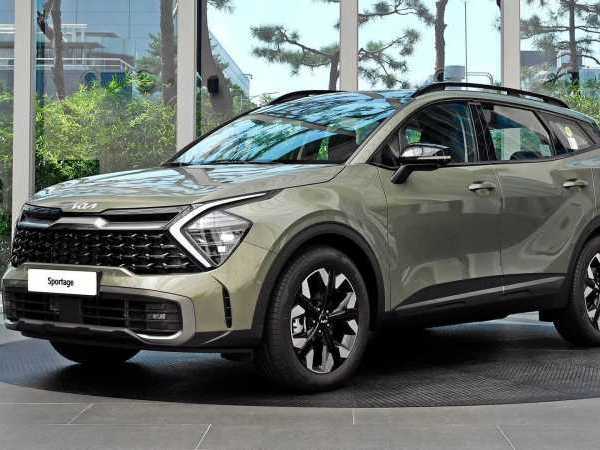
Kia Sportage: Superior Suspension for Smooth Ride
Kevin WongMay 19, 2025
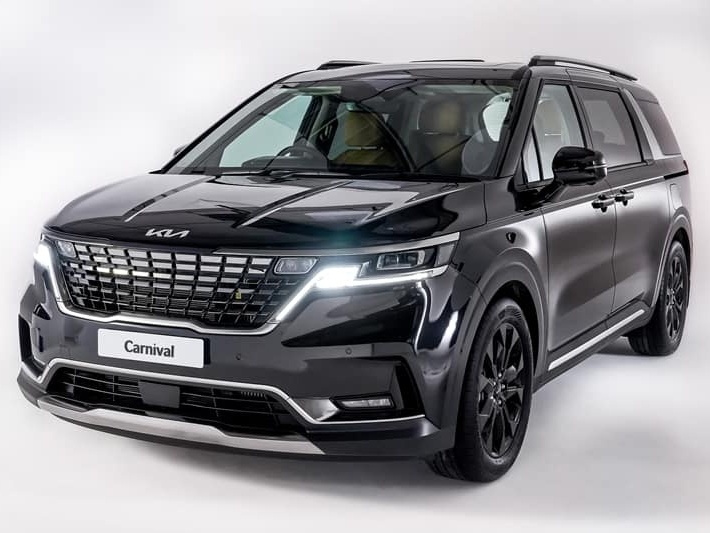
Kia Carnival: Spacious & Versatile for Every Journey
Kevin WongMay 19, 2025
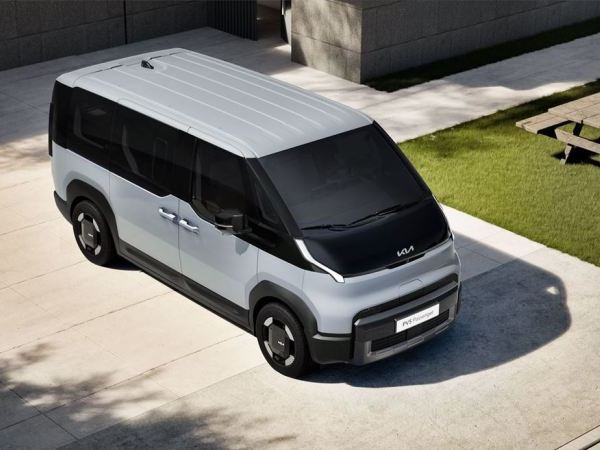
Kia reveals all details of PV5, with a maximum range of up to 400 kilometers
LienMar 11, 2025
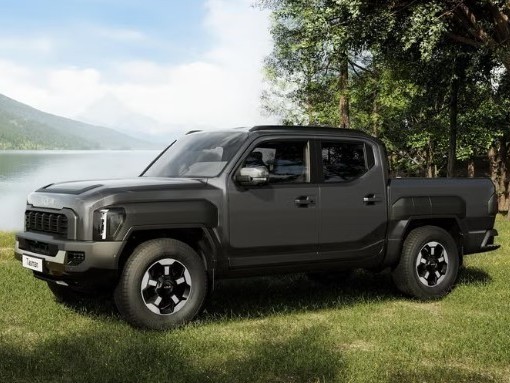
173L cargo box, 3500kg towing capacity, KIA Tasman meets all your needs!
MichaelOct 31, 2024

The interior of Kia's brand new pure electric sedan EV4 is exposed, expected to debut in mid-2025
MichaelOct 9, 2024
View More












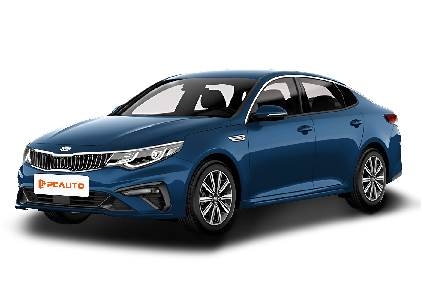
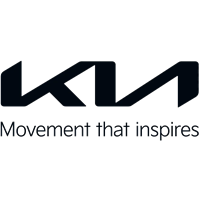 Cars
Cars




Pros
Cons